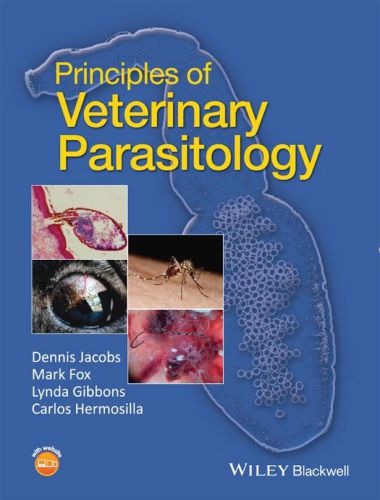Principles of Veterinary Parasitology is a student-friendly introduction to veterinary parasitology. Written primarily to meet the immediate needs of veterinary students, this textbook outlines the essential parasitological knowledge needed to underpin clinical practice.
Principles of Veterinary Parasitology 1st Edition

Conceptual relationships between parasitic organisms, their biology and the diseases they cause are clearly illustrated. Help boxes and practical tips are included throughout alongside a wealth of colour photographs, drawings and life-cycle diagrams. Organised taxonomically with additional host-orientated chapters and focusing on parasites that commonly cause animal or zoonotic disease, welfare problems or economic losses, students worldwide will benefit from this straightforward and easy to comprehend introduction to veterinary parasitology.
Key Features Principles of Veterinary Parasitology 1st Edition
- An easy to navigate textbook, providing information essential for clinical studies
- Full colour throughout, with photographs, diagrams, life-cycles and help boxes for visual learners
- A companion website including a pronunciation guide, self-assessment questions and further reading lists
This is one of the most complete and easy to read books on veterinary parasitology that I have reviewed. The authors have captured and distilled the important information that is available about parasites. They have succeeded in providing current information without succumbing to irrelevant detail. Their goal of stimulating readers to further investigate and challenge themselves has been met.
Principles of Veterinary Parasitology is an excellent textbook for parasitology courses in veterinary and veterinary technology curricula because it emphasizes common elements of parasite groups, followed by descriptions of the most common and important group members. The authors have done an outstanding job of discussing characteristics to unite aspects of parasite infection that students can use to create a framework for understanding the individual species they will encounter in clinical training and practice. The book has a student-friendly layout with attractive and useful illustrations. Color-coded boxes provide additional information and tips for learning material.
The text is well supported by an excellent and extensive image library that has had numerous contributors fro-mall over the world, and a large number of equally excellent hand drawn illustrations.
This textbook has been written primarily to meet the immediate needs of veterinary students, outlining the essential parasitological knowledge needed to underpin clinical practice, but I feel that is a great text for any veterinarian or veterinary nurse that has an interest in parasitology and I have enjoyed reading it.
| PDF Size: 45 MB | Book Download Free |
Password: pdflibrary.net

